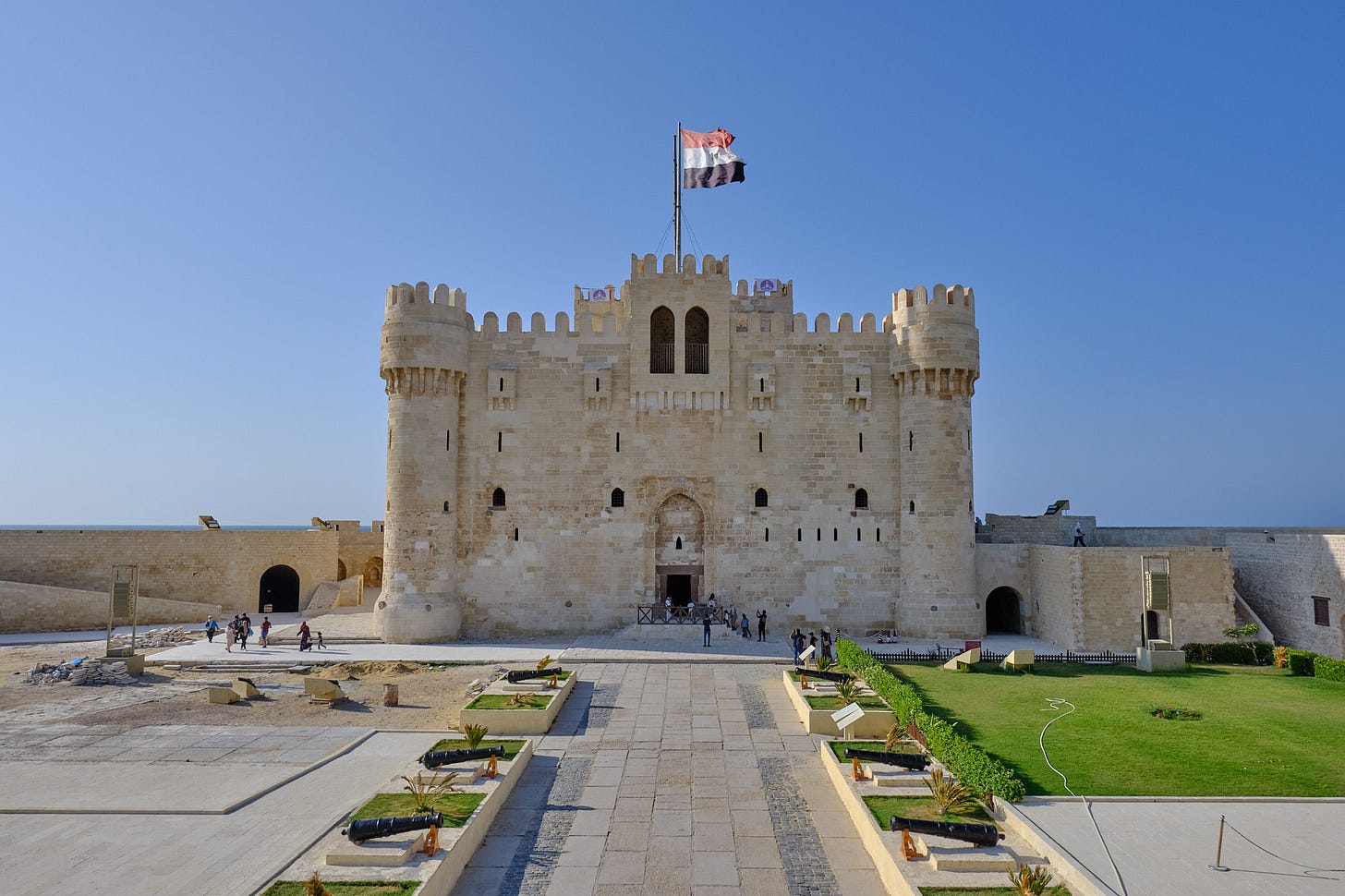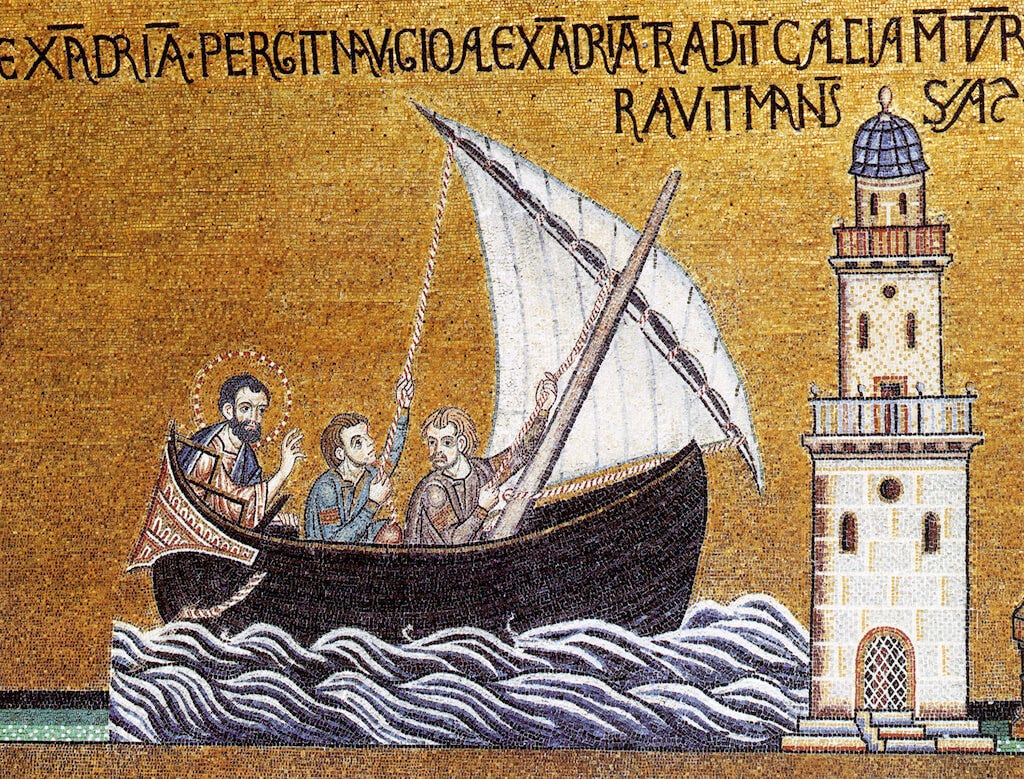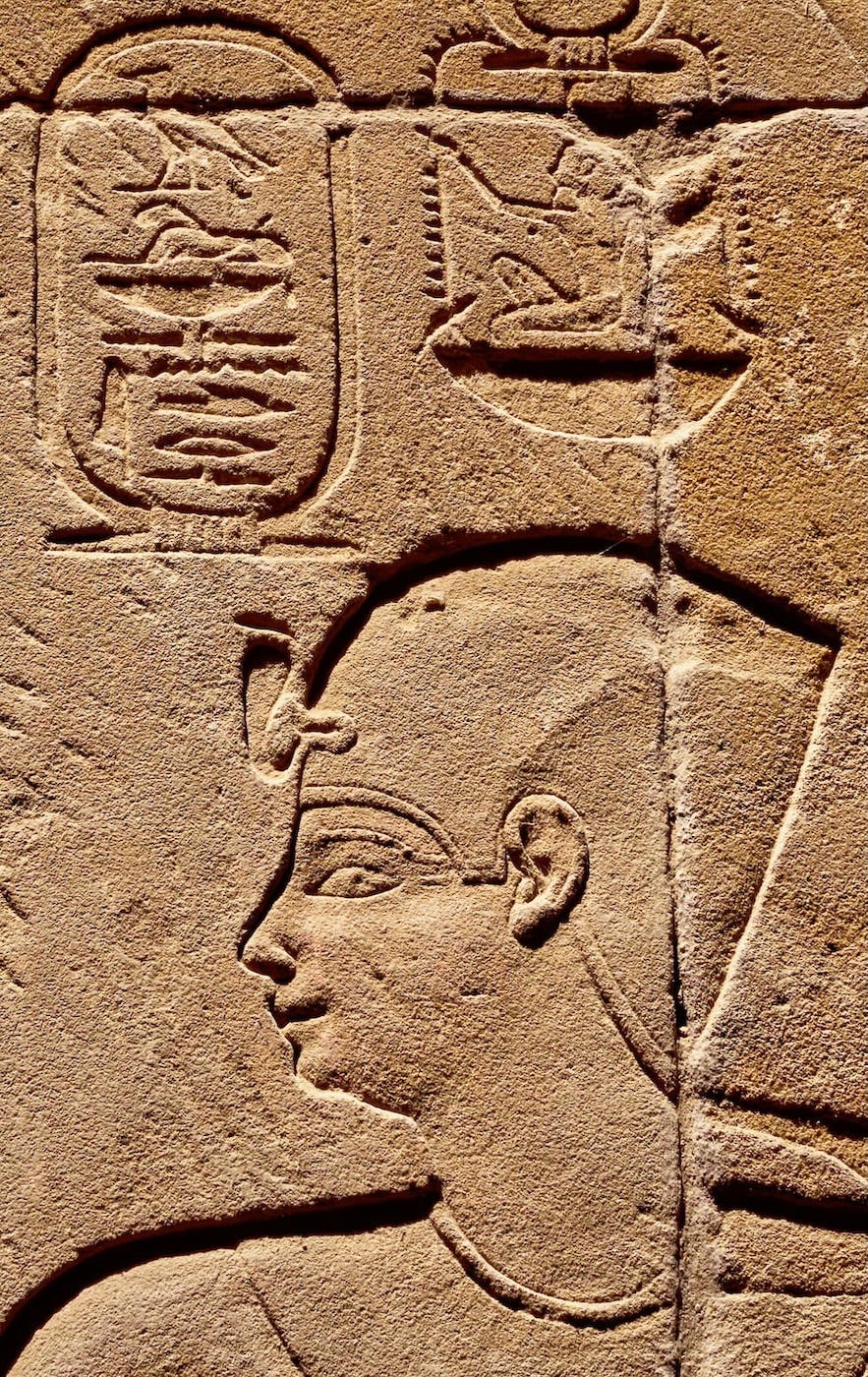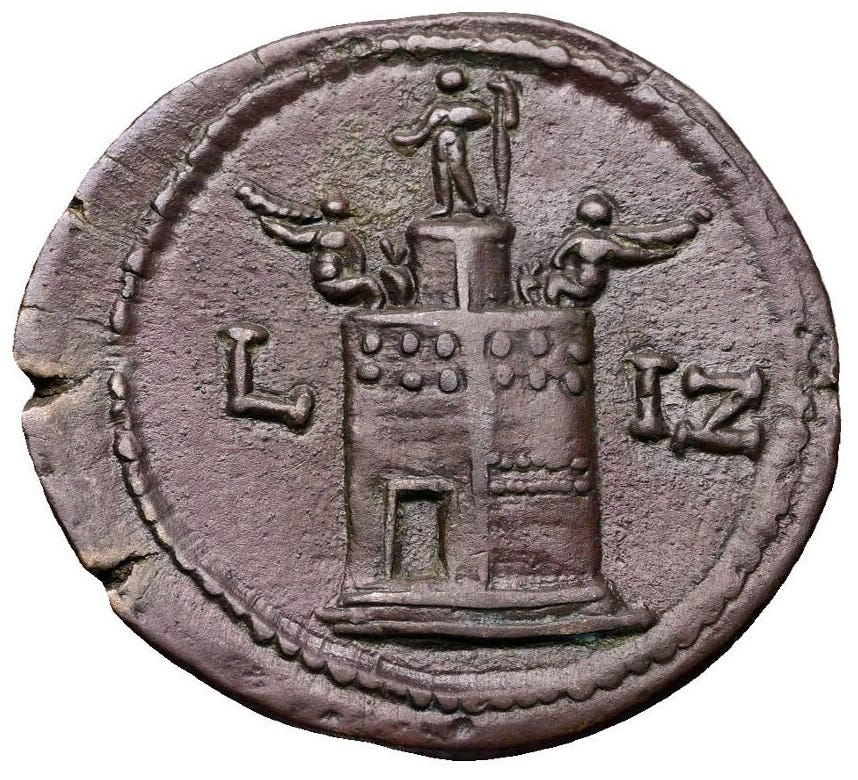Daydreaming of time travel, looking for Alexandria's Lighthouse.
Standing on the spot where one of the Seven Wonders of the World used to be.

In past stories, we used an imaginary time machine as a literary device to travel to ancient times. This is different, genuinely walking in the footsteps of History.
These words were written while standing on Alexandria's shore. On my left is the precise spot where the Lighthouse used to stand, and on my right, the new Library.
Join me, dear reader, in this stroll between present and past.
This Moment of Wonder story is about not one, but two lost Wonders. One, the Lighthouse of Alexandria, is on the Seven Wonders of the World list. As we will see here, fortunately, there are still visible elements to help us dream about it.
The second part of the story will be about the old Library of Alexandria.
The very first thing I did once arriving in Alexandria was head to the modern Library, ask for the section about the history of libraries, and open a book. To search for the Great Library’s destiny, we will, appropriately, use books.
This is not a story written by AI or researched on Facebook, but rather one that uses verifiable facts and recounts firsthand what remains of past wonders. This is as close to time travel as it gets.
So buckle up, dear reader, as we attempt to travel back in time.
Pharaoh Alexander the Great created Alexandria
Notice that I wrote 'Pharaoh Alexander'. Alexander the Great was born a Macedonian (Macedonia, located north of Greece, was culturally part of the Greek world) and died an Egyptian.
He conquered the lands between Macedonia and Egypt. There, he was greeted as a liberator, having driven out the despised Persian Empire. Now, try to imagine what the conqueror did, faced with a civilization that was almost three thousand years old?
Alexander chose not to impose his ways or rule Egypt from afar, but instead asked the traditional gods to accept him as a rightful successor to former Pharaohs.
So the foreigner became Pharaoh Alexander, Chosen by Re, Beloved by Amun. He was depicted on temples in this manner and mummified, as befits an Egyptian King. The consequences of that choice were far-reaching.
Alexandria heralded a multicultural society, comprising elements of Greek, Egyptian, and later Roman cultures. That multilingual world, when Greek Pharaohs had declarations carved in Greek and Egyptian hieroglyphs, would be the key to deciphering them a couple of thousand years later.
Pharaoh Alexander's successors, the Ptolemaic dynasty, which lasted for three hundred years until Cleopatra, transformed the city into a major trade and cultural centre, featuring a Lighthouse and a Library.
First, we turn left towards the Lighthouse.
The Lighthouse of Alexandria, a Wonder of the ancient world

There is only one place on earth where we do not need to imagine the Seven Wonders of Antiquity: Giza, in front of the pyramids. As to the other six, they were lost either to the folly of man or the fury of nature.
The Lighthouse of Alexandria survived for 1,600 years. Before thinking the ancients did not do a great job, ask yourself if modern wonders like the Chrysler Building will still stand after 1,600 years.
One needs to think of the Lighthouse of Alexandria as the first skyscraper in history. The fact that it stood for that long, overcoming many earthquakes, is a testament to the genius of its architect.
Who designed the Lighthouse of Alexandria?
Ancient authors tell us that the Pharos—the Greek name for Lighthouse—was built around 300 BC in only fifteen years. They tell us that Sostratus of Cnidos designed the Pharos. Pliny describes the scene:
There is another building, too, that is highly celebrated; the tower that was built by a King of Egypt, on the island of Pharos, at the entrance to the harbour of Alexandria.
The cost of its erection was eight hundred talents, they say; and, not to omit the magnanimity that was shown by King Ptolemy on this occasion, he gave permission to the architect, Sostratus of Cnidos, to inscribe his name upon the edifice itself.
Another ancient writer tells us that Sostratus was so clever that he covered his signature with gypsum, where an inscription praising the King was carved. Soon enough, the sea air dissolved the royal inscription to reveal the architect’s signature:
Sostratus of Cnidos, the son of Dexiphanes, to the Divine Saviours, for the sake of those who sail at sea.
The Pharos cost 17 tons of silver, while the Parthenon cost 'only' 12 tons.
The Lighthouse was Alexandria's 'second sun'

Science—the remains of the Lighthouse—tell us that Sostratus of Cnidos must have been a clever engineer, as fragments of lead, iron, and bronze were discovered.
These were used to reinforce the Pharos, explaining why it survived centuries of storms, many earthquakes, while being estimated to have been between 103 and 118 meters—or 337 and 387 feet—high.
Another author, who lived in Alexandria, tells us:
It was like a mountain, almost reaching the clouds, in the middle of the sea.
Below the building flowed the waters; it seemed to be as it were suspended above their surface, while at the top of this mountain rose a second sun to be a guide for ships.
Being a marvel of engineering and design, a beacon visible up to 100 nautical miles away, is the reason why it was one of the Seven Wonders.
It graced Alexandria until 1303, when another earthquake and tsunami proved too much, and one of the ancient world's wonders tumbled down into the sea.
In the 1480s, the Qaitbay Fort was built on the same spot. Until the 1960s, one may have asked if the Lighthouse was nothing but a legend.
What does remain of the Lighthouse of Alexandria?

In 1960, an Egyptian spear-fishing diver discovered the colossal statue above. To understand the statue's size, consider that when intact, you would only reach her knee—it is over 27 feet high.
She was part of a pair of statues that stood at the entrance of the Lighthouse. This colossal statue of a Greek Queen in the Egyptian style is one of the impressive fragments of the Lighthouse that can be seen in Alexandria today.
There was much more to be discovered. In 1994, Jean-Yves Empereur and his Franco-Egyptian team of specialist divers uncovered 3,000 fragments scattered across 160,000 square feet in the sea just off the Qaitbay Citadel.
As you will see with the video below, the site is a dazzling jumble of fragments from different eras of ancient Egypt.
The seafloor of Alexandria's harbor is a genuine treasure trove, featuring ancient Egyptian and Greco-Egyptian monuments, as well as shipwrecks.
Diving to wonder at the remains of the Lighthouse of Alexandria

Dear reader, as an art historian who is also a keen diver, donning a mask and diving equipment at the foot of the Qaitbay Fort to discover for myself the remains of the Lighthouse of Alexandria has long been a dream of mine.
Unfortunately, for many reasons, it is not possible. Among them is the poor visibility, although the fragments are no deeper than 30 feet.
That was why I walked along the shore of Alexandria and visited the museums to see with my own eyes the statues that once adorned the site of the Lighthouse. I tried to share that stroll, to help you imagine one of the Seven Wonders of the ancient world.
To imagine diving together and admiring the Lighthouse of Alexandria, enjoy the video below. Needless to say, this is not some AI nonsense or a video game recreation, but the real deal, pieced together from thousands of photos.
It was conceived by the Centre d'Études Alexandrines, a French scientific institute founded in 1990, which works closely with the Egyptian Ministry of Antiquities and Alexandria University.
This fantastic video helps visualise the archaeological site in front of Qaitbay fort. The huge fragments, weighing up to 40 tons, easily stand out among the thousands of scattered stones. They are fragments of the entrance to the Lighthouse of Alexandria.
Meandering together in Alexandria between past and present was, I trust, dear reader, a Moment of Wonder.
As we will see next, uncovering what remains of the Great Library of Alexandria will prove to be a great deal more challenging.
Sources
https://www.cealex.org/research/current-operations/the-pharos/
https://pharos.cealex.org/les-fouilles-archeologiques/
https://pharos.cealex.org/le-phare-dalexandrie/
https://penelope.uchicago.edu/encyclopaedia_romana/greece/paganism/pharos.html
Judith McKenzie, The Architecture of Alexandria and Egypt, C. 300 B.C. to A.D. 700.
https://the-past.com/feature/illuminating-antiquity-the-pharos-lighthouse-in-alexandria/
https://www.franckgoddio.org/projects/sunken-civilizations/alexandria.html
https://www.bibalex.org/underwaterconf/en/honaryleaders/HonaryLeadersDetails.aspx?ID=4
https://www.pbs.org/wgbh/nova/sunken/empereur.html







